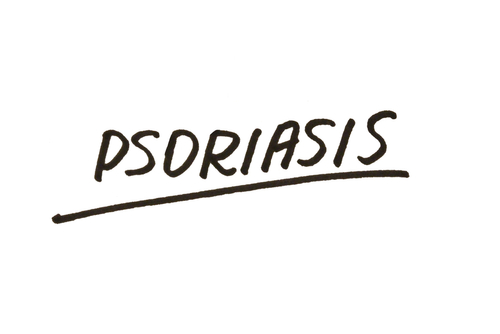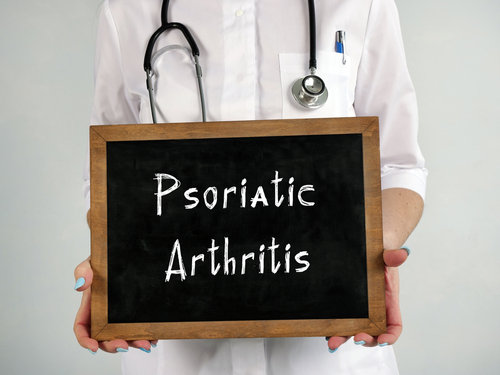
Early psoriatic arthritis detection can pose a challenge for rheumatologists—especially in the presence of psoriasis. A study assessed the correlation between serological markers and comorbidities in psoriatic patients.
The study consisted of two parts. First, researchers performed a retrospective chart review of all patients aged older than 20 years diagnosed with psoriatic arthritis or psoriasis from July 1, 2000, through Dec. 31, 2014, at Chang Gung Memorial Hospital, Kaohsiung (CGMH-KS) Medical Center. Second, they stratified male patients into four groups: psoriatic arthritis (n=4), psoriasis (n=3), systemic lupus erythematosus (SLE; disease controls; n=4), and osteoarthritis (OA; non-inflammatory controls; n=3). Patients provided plasma for microRNA array analysis. Factors assessed included age, sex, leukocyte differential count, hemoglobin, hematocrit, platelet count, creatinine, uric acid, C-reactive protein, erythrocyte sediment rate, rheumatoid factor, lipid profile, anti-nuclear autoantibodies, anti-ENA autoantibodies, anti-phospholipid autoantibodies, anti-neutrophil cytoplasmic autoantibodies, anti-citrullinated protein antibodies (ACPA), hepatitis B surface antigen, anti-hepatitis C antibody, and comorbidities (diabetes, hypertension, gout, axial spondylopathy, asthma, bronchitis, allergic dermatitis, etc.).
In the cohort from part one of the study, 629 total patients were identified: 102 with psoriatic arthritis and 527 with psoriasis. In the psoriasis group, the rate of psoriatic arthritis was 19.35%. Serological markers were not useful to differentiate between psoriatic arthritis and psoriasis. Psoriatic arthritis patients were significantly more likely to have hyperlipidemia (2.94%) and gout (4.9%) than psoriasis patients. Patients with hyperlipidemia had an odds ratio (OR) for psoriatic arthritis of 15.94 (95% confidence interval [CI], 1.64 to 154.80); gout patients had an OR of 3.83 (95% CI, 1.19 to 12.31). Psoriatic arthritis patients were more likely than psoriasis patients to have allergic rhinitis (5.88%); the OR in allergic rhinitis patients was 8.17 (95% CI, 2.26 to 29.50). Plasma hs-miR-210-3p could be used to differentiate psoriatic arthritis from psoriasis; “its levels can also be distinguished from PSA after treated with anti-TNFα biologics agents,” added the study authors.
The findings were published in Clinical Rheumatology.
“Clinicians should be particularly aware of such manifestations as gout, hyperlipidemia, axial spondylopathy (inflammatory back pain), and allergic rhinitis in [psoriasis] PSO in order to ensure the early diagnosis of [psoriatic arthritis] PSA among psoriasis patients. Moreover, miR-210-3p could be a marker that differentiates between PSO and PSA and also between before and after biologics treatment,” the researchers summarized.







 © 2025 Mashup Media, LLC, a Formedics Property. All Rights Reserved.
© 2025 Mashup Media, LLC, a Formedics Property. All Rights Reserved.